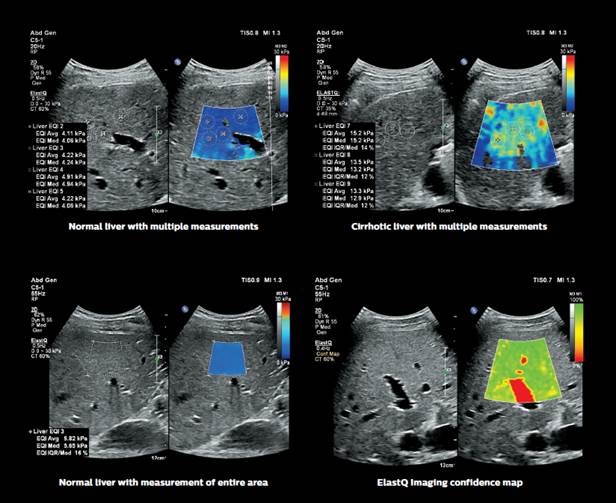 By Kelly Horst, M.D.
By Kelly Horst, M.D.
Diagnostic Radiologist, Northwest Radiology Network
The importance of the liver to the body’s overall health is often underrated. This critical organ detoxifies chemicals, makes important proteins for the body and produces enzymes for digestion. Scarring of the liver, by liver fibrosis or liver disease, makes it work less efficiently.
The more scarring there is, the lower the function. So it’s important for physicians to be able to measure the degree of damage to a patient’s liver tissue.
Prior to the development of ultrasound elastography, the only way to measure liver damage was through a biopsy. This invasive procedure involves risk, including a risk of bleeding, a risk of infection, and a risk of obtaining poor samples.
With elastography, doctors have a newer tool to quantify a person’s risk of liver scarring and fibrosis non-invasively. Northwest Radiology Network is proud to offer ultrasound elastography in conjunction with St. Vincent Hospital at its 86th Street campus.
Elastography is useful in detecting stiffness in the liver, something doctors have known for centuries is often associated with abnormal tissue. By measuring stiffness of the liver, it can provide diagnostic information about the presence or status of disease.
To be clear: elastography does not replace liver biopsy, which is still considered the gold standard to evaluate liver tissue for fibrosis and cirrhosis. But elastography has been shown to be very helpful in determining risk for future liver damage or staging of ongoing liver disease.
And because fibrosis of the liver is diffuse, a standard biopsy can miss the diseased portion, resulting in a false negative diagnosis. Elastography, on the other hand, looks at a more representative sample of the organ.

ElastQ Imaging features a large, resizable, color-coded Region of Interest that provides quantitative stiffness analysis and the ability to perform multiple measurements on a single image. (Philips, used with permission.)
Like any ultrasound, it involves using a probe that is positioned over the skin and takes extremely high-quality pictures of the liver. The procedure is quick and completely painless.
Even more exciting than ultrasound elastography is magnetic resonance (MR) elastography, which Northwest Radiology expects to begin offering soon. MR elastography has proven to be even more accurate in determining risk for fibrosis and scarring, and has a superior capability in evaluating additional liver anatomy.
If you are diagnosed with liver disease or are at risk, or are a physician with patients showing symptoms of liver damage, elastography may be the non-invasive tool you need in assessing the disease and charting a path for treatment.




